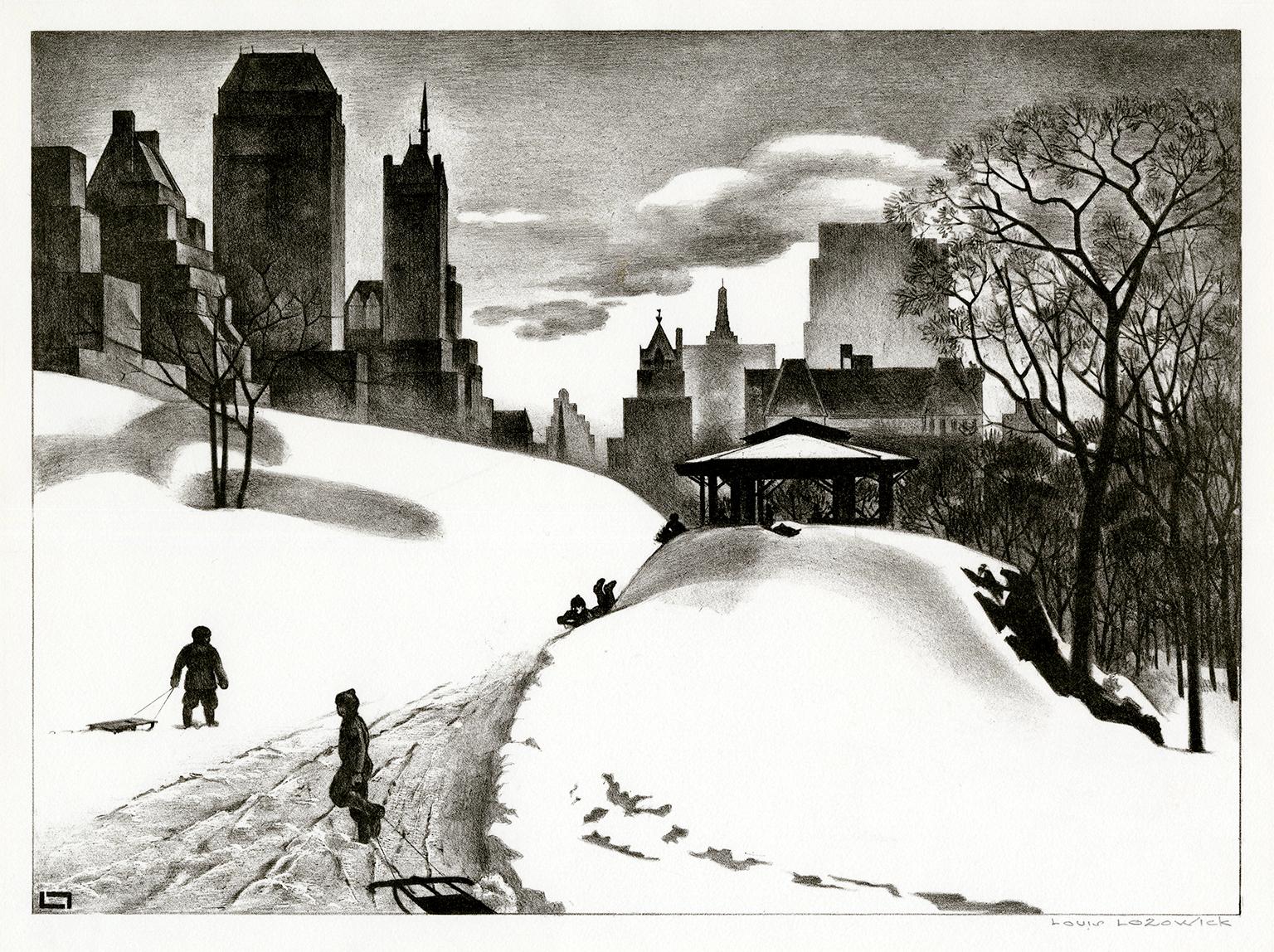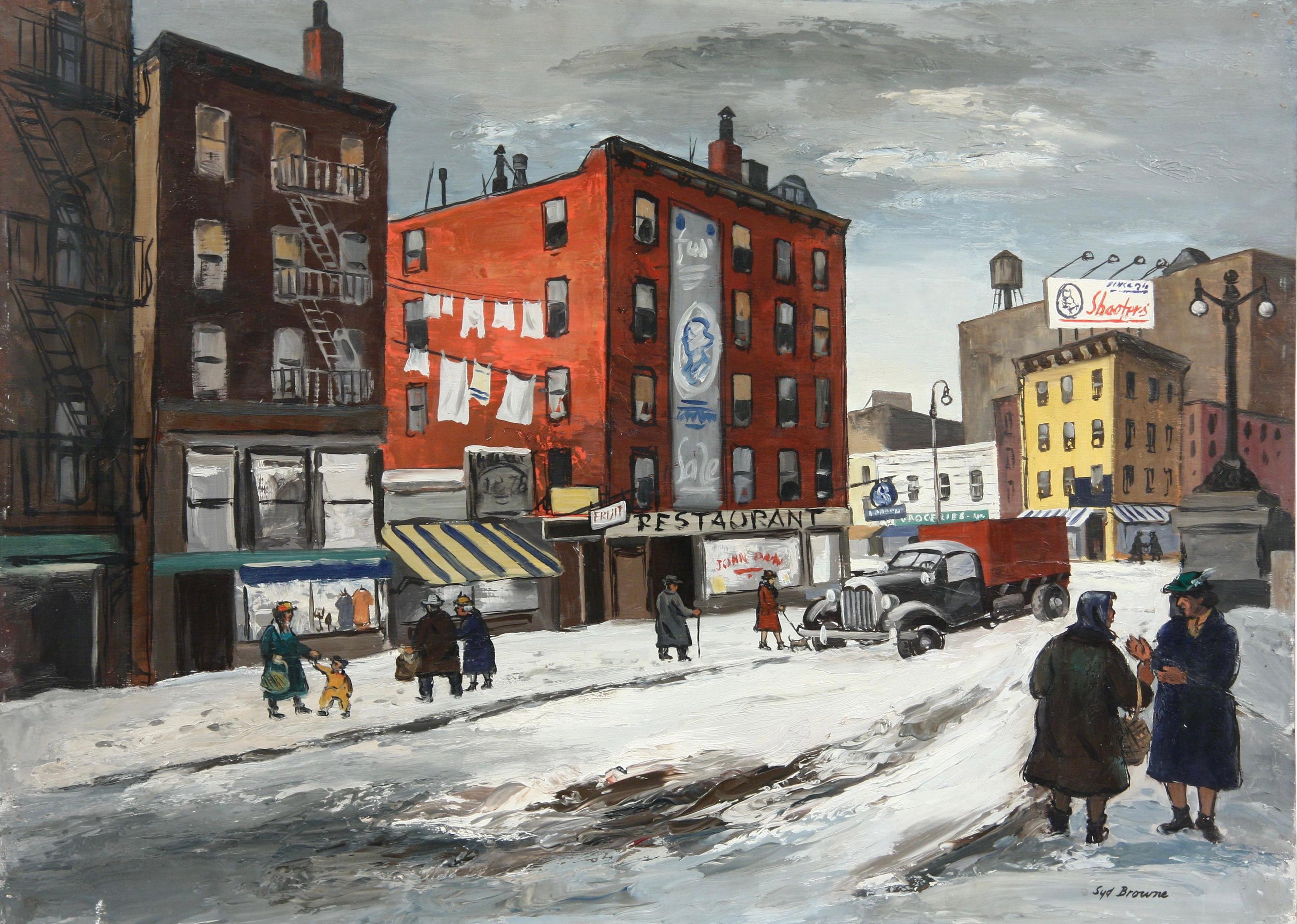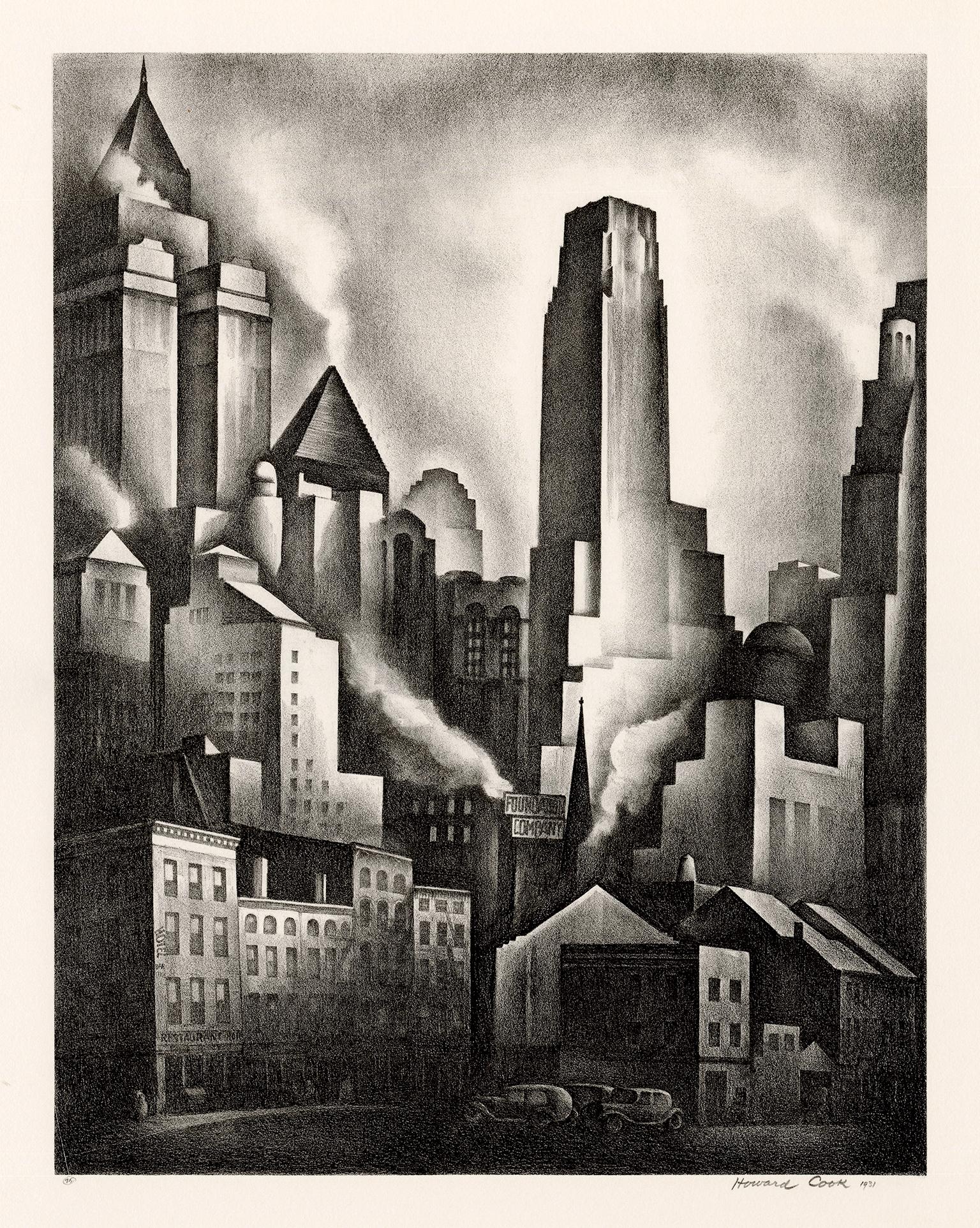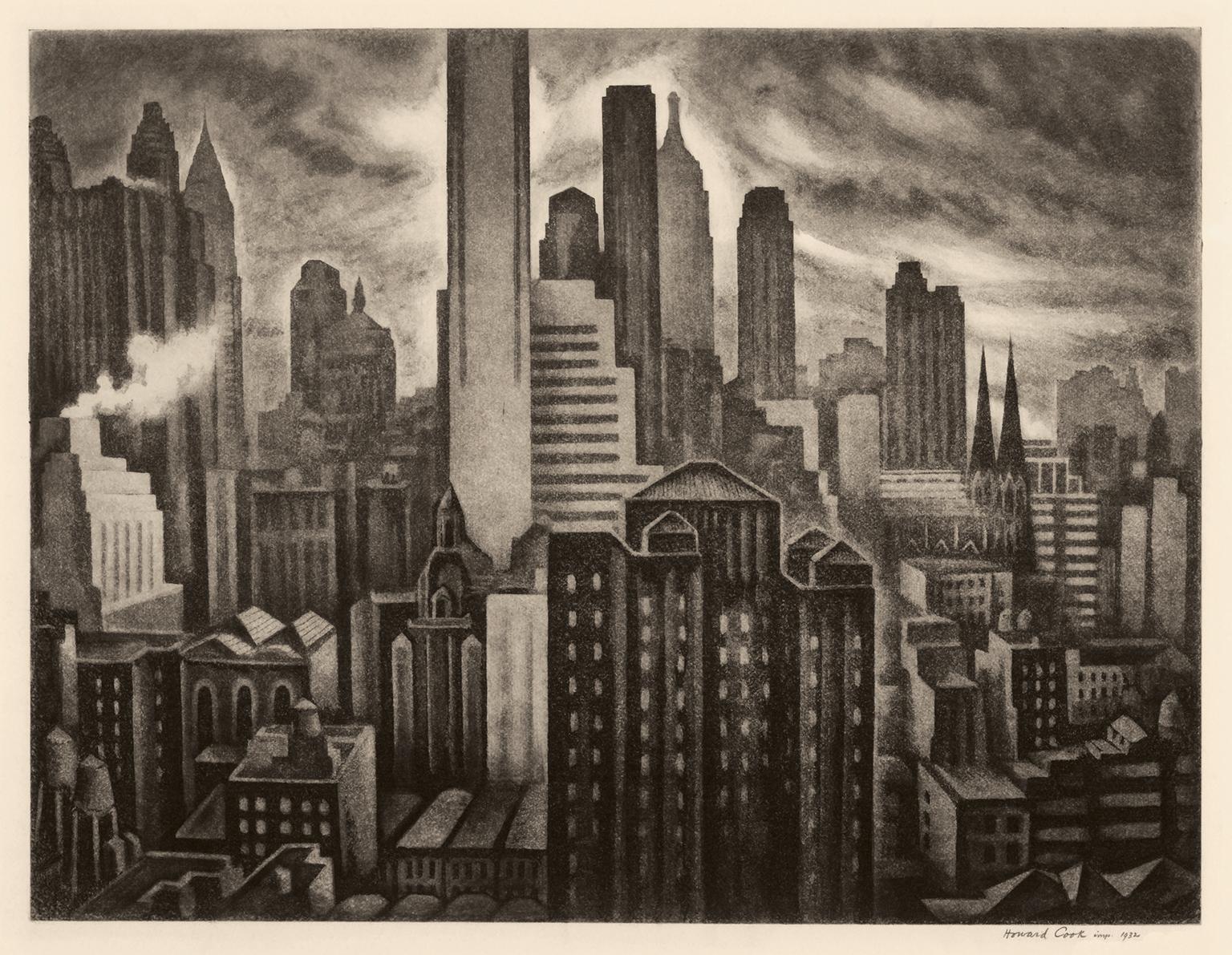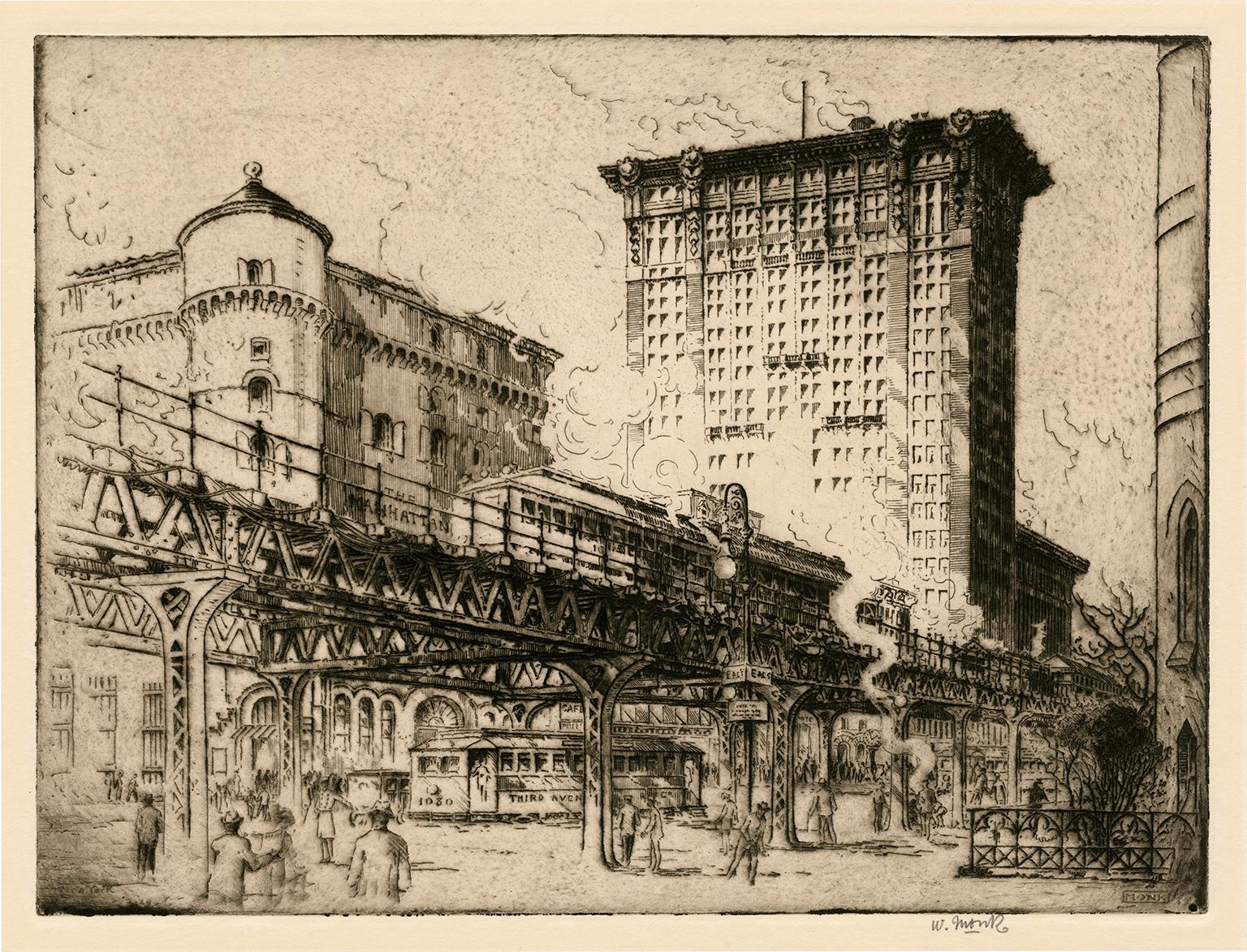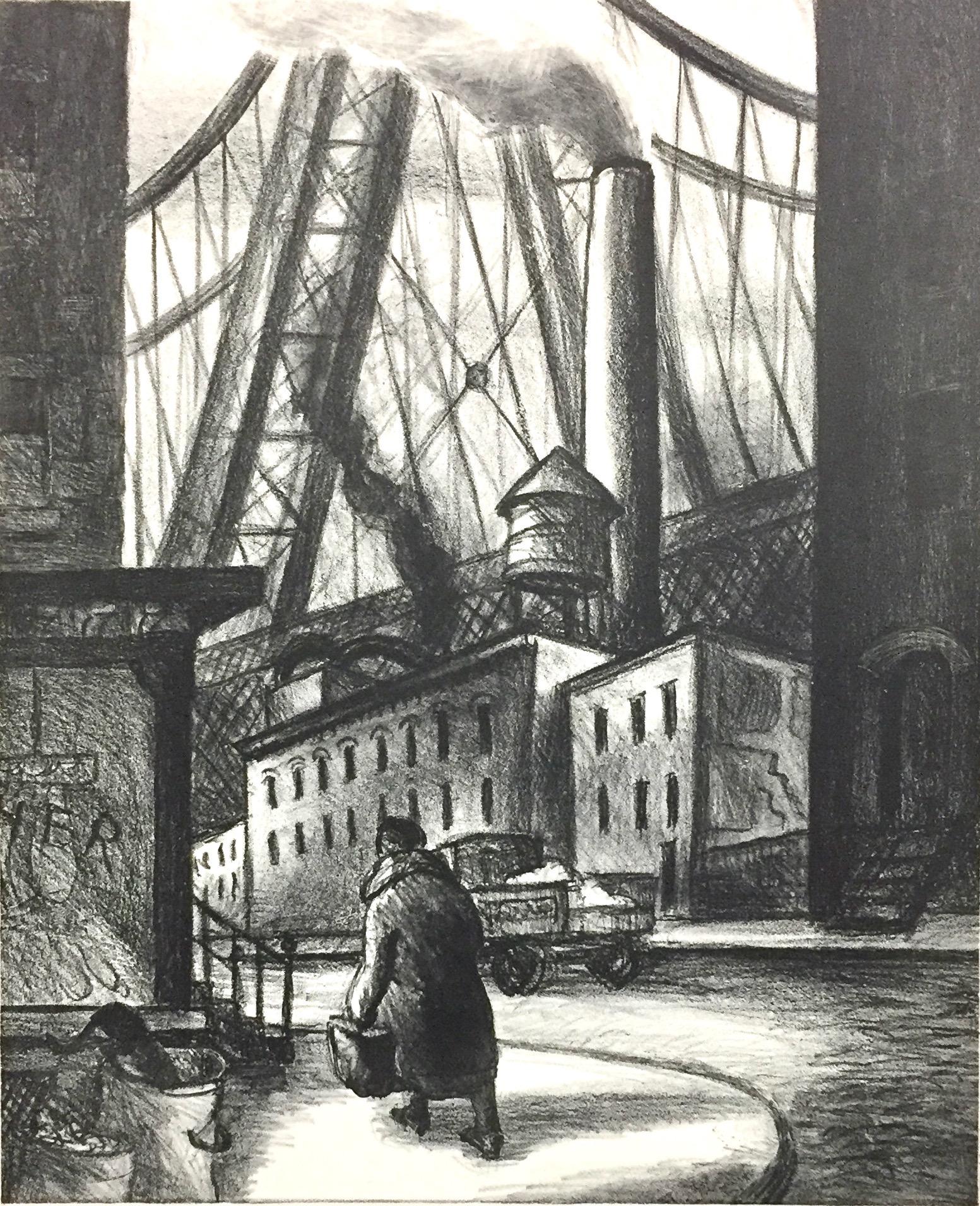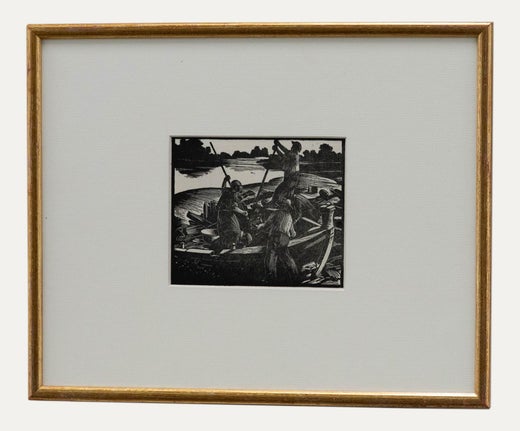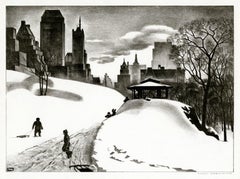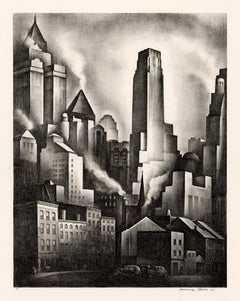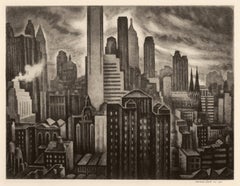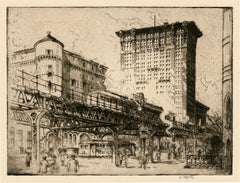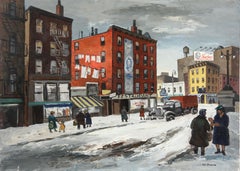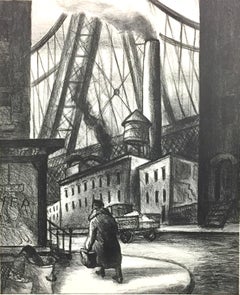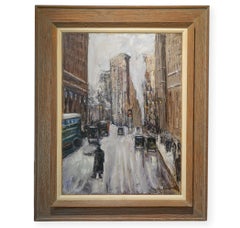Clare Leighton, 'Snow Shovellers, New York', 1929, wood engraving, edition 45, Boston Public Library 146. Signed, titled, and numbered '29/45' in pencil. A superb, richly-inked impression, on cream, wove Japan paper, with full margins (1/2 to 3/4 inch), in excellent condition. Archivally matted to museum standards, unframed.
Image size 8 1/16 x 6 inches; sheet size 9 1/2 x 7 1/8 inches.
Impressions of this work are in the following museum collections: Blanton Museum of Art, Farnsworth Art Museum, Museum of Fine Arts Boston.
ABOUT THE ARTIST
"The process of wood engraving was not just a technique for Leighton but a spiritual act in which the artist created light from the wood block. As she described it, the process was 'almost a Biblical feeling that you're making light—a sort of Genesis.' "
—from the essay 'Clare Leighton's Art and Craft: Exploring Her Rich Legacy through the Pratt Collection' by Caroline Mesrobian Hickman
Clare Leighton (1901–1989) was a distinguished British-American artist best known for her evocative wood engravings that depict rural life, landscapes, and the labor of ordinary people. Born in London, Leighton grew up in a creative and intellectual family, which fostered her early interest in the arts. She studied at the Brighton School of Art, the Slade School of Fine Art in London, and the Central School of Arts and Crafts, where she learned the art of wood engraving under the mentorship of renowned engravers like Noel Rooke. This technique would become her hallmark and vehicle for capturing the beauty of the natural world and the dignity of working-class people.
Leighton’s work gained widespread recognition for its dynamic and detailed portrayal of agricultural scenes, craftspeople, and rural life, often in a way that celebrated the connection between people and nature. Her work showed empathy and admiration for her subjects and demonstrated a skillful, almost architectural approach to composition, where every element was carefully composed and meticulously detailed.
In the 1930s, Leighton published several influential books, including The Farmer's Year (1933) and Four Hedges: A Gardener's Chronicle (1935), combining her engravings with her poetic prose. These books celebrated the cycle of rural life, the beauty of nature, and the importance of craftsmanship. She moved to the United States in 1939, settling in North Carolina, where she continued to produce engravings and also taught art. Her work in America expanded to include iconic depictions of Southern life and New England landscapes, capturing the distinct regional characteristics of her adopted country.
Leighton was a prolific illustrator, creating wood engravings for numerous books, and her work was widely exhibited in both the UK and the US. Throughout her life, Leighton received numerous honors, including election to the National Institute of Arts and Letters. Her legacy endures not only through her engravings and books but also through her influence on the art of wood engraving and her role in documenting and celebrating the beauty of rural life. She passed away in 1989, leaving behind a body of work that reflects her technical skill and deep love for the world around her.
Leighton's celebrated work is widely represented in numerous public collections including the Allentown Art Museum, Art Gallery of New South Wales, Blanton Museum of Art, Boston Public Library, British Museum (London), Brooklyn Museum, Cedar Rapids Museum of Art, Cleveland Museum of Art, Davis Museum (Wellesley College), Farnsworth Art Museum, Fine Arts Museums of San Francisco, Fitzwilliam Museum (Cambridge, UK), Hood Museum, Library of Congress, Nelson-Atkins Museum of Art, Memphis Brooks Museum of Art, Metropolitan Museum of Art, Museum of Fine Arts Boston, National Gallery of Art, Nelson-Atkins Museum of Art, Phoenix Art Museum, Rhode Island School of Design, Smithsonian American Art Museum, UC Santa Barbara, Victoria and Albert Museum (London), Williams College Museum, Yale University Art Gallery, Yale Center for British Art (New Haven, USA).
